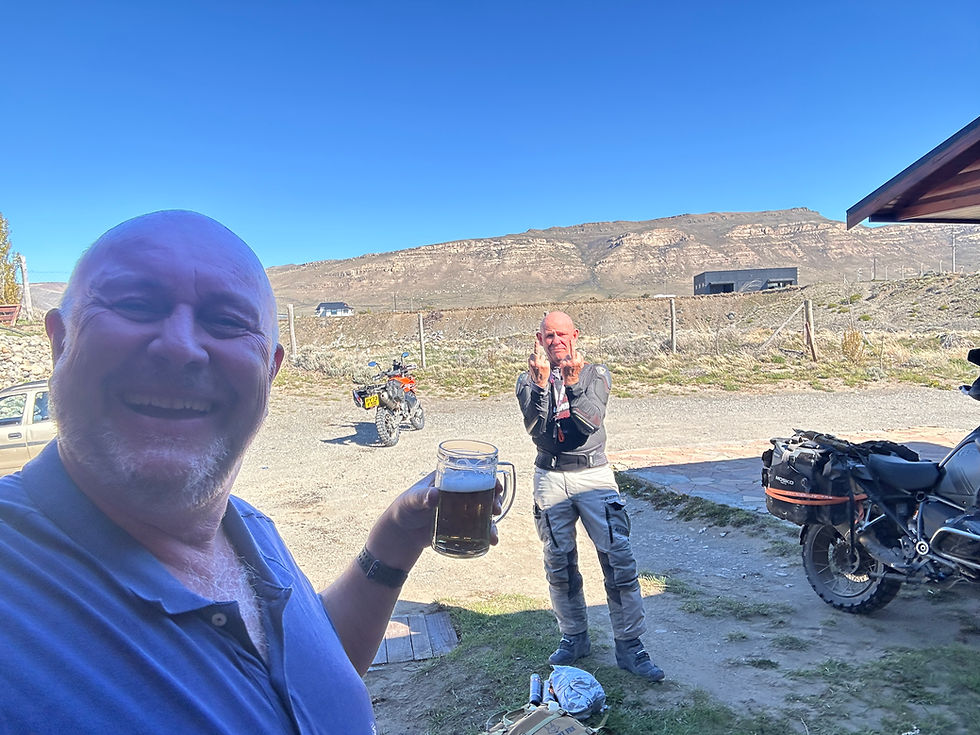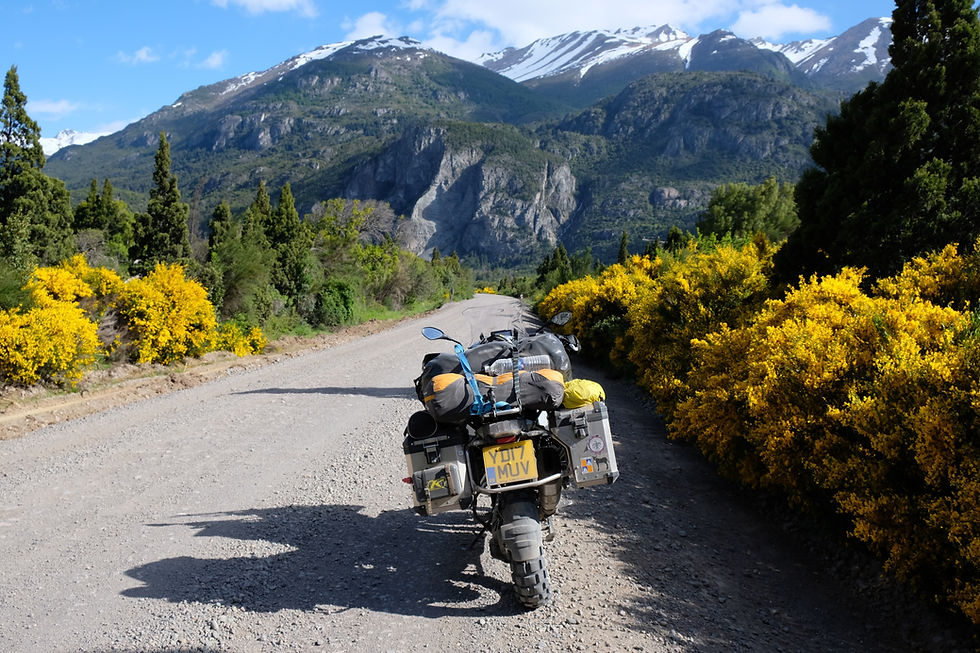El Calafate
- John Apps
- Nov 2
- 3 min read
Our time in Torres del Paine is over. We have had a fabulous three days in this amazing hotel and in this incredible national park. I can only say to anyone who reads this, you need to visit.

We had our final breakfast and said goodbye to the staff who have looked after us unbelievably well. We packed our stuff and loaded our bikes again. It will be great to get back on the motorcycles.
The weather today is incredible without a cloud in the sky and the massif is looking unbelievable. The rough road out of the park was dusty in this dry heat, but we stopped often for photographs And enjoyed our final views.

The park gates signalled the change in scenery from Andes mountains to Patagonia steppe and once again we were in the flatter area that we have been used to for the last month.. The roads were lined with Guanaco, and we witnessed a gaucho with his six dogs moving a herd of cows from one side of the road to other with incredible expertise. The dogs were synchronised and knew exactly what they were doing. and it was a real highlight of the day to see this.
We arrived at the border and went through the usual paperwork to get back into Argentina and then we headed onto Route 40 for the first time on our journey north. Route 40 is a highway over 5,000 km long that crosses Argentina from north to south, from La Quiaca to Cabo Vírgenes, passing through eleven provinces. It is known as one of the longest routes in the world and connects a wide variety of landscapes, from the high-altitude desert of the northwest to the glaciers and lakes of Patagonia. The route offers a journey through diverse geographies, cultures, and ecosystems, making it a classic road trip destination.

I bought a book in 1990, about expedition road trips.. and ruta 40 was my goal back then, i never forgot this, and this was my reason for doing this trip in 2017. Now we are back on it again. The road is mainly paved now and is not the original route. However, there are parts of the old road that remain and we detoured onto an 80 km section of the old road to be able to experience at least some of the road as it used to be.
We were slightly concerned when we pulled onto the road as there was a big sign that said this road is only capable for four-wheel-drive, but it actually turned out to be fine. and we even passed a tiny hatchback coming the other direction. The road heads into complete wilderness and we were soon very much on our own in the middle of nowhere. With the Andes mountains to our left consistently on the horizon. We thoroughly enjoyed this section of road. And when we arrived at the other end, we stopped and banged the dust off of our jacket and bikes, and got congratulatory "toots" from cars passing on the road. Here we rejoin the main road that runs to Calafate. We reached the end of the plateau on which we had been riding and were confronted with the incredible view off the river valley coming off of Lake Argentina and heading east towards Rio Gallegos. We stopped on a high mount to take photographs and then descended the escarpment down towards Calafate.

We are staying at the same hotel but I stayed at seven years ago and I was unbelievably able to almost drive straight to it. We checked and unloaded our bags and Tim disposed of two more cans of chain cleaner. Whilst I found the fridge in the bar and help myself to beer, which I waved out of the window at Tim and got the one finger salute.

We walked down the steep hill into town to go to the Patagonia bar and then found a restaurant to eat Patagonia lamb before ascending the hill, which was much harder than previous time. It’s been another great day and we are now a month in to this adventure., And I don’t think we have had a single day that we wouldn’t wish to do again.




Comments